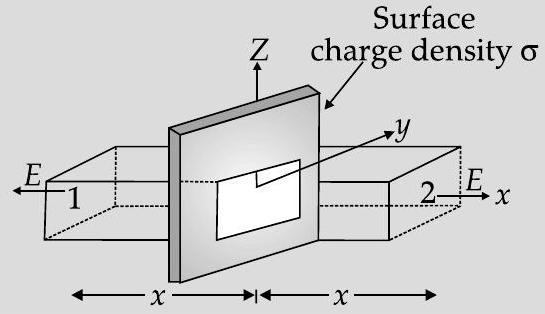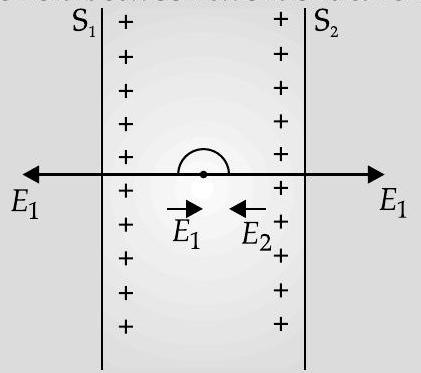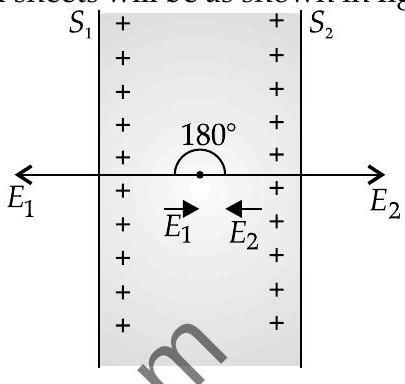electric-charges-and-fields Question 48
Question: Q. 7. Using Gauss’s law in electrostatics, deduce an expression for electric field intensity due to a uniformly charged infinite plane sheet. If another identical sheet is placed parallel to it, show that there is no electric field in the region between the two sheets.
A&E [Foreign III 2017]
Show Answer
Solution:
Ans. Derivation of expression for electric field 2 Proving that there is no electric field between plates
1

Electric field between two identical charged sheets

Hence the net field is zero.
[CBSE Marking Scheme, 2017]
Detailed Answer :
In the figure, if
It is analysed that unit vector which is normal to first surface will be in negative
Hence,
net flux through Gaussian surface
charge enclosed by closed surface
As per Gauss’s law,
This shows that the electric field around an infinite plane of charge does not vary with distance from the plane.
In terms of vector,
where,
Since the two charged infinite plates have identical charges, so electric field between two identical charged sheets will be as shown in figure :

Now electric field due to surface 1
$$ \vec{E}{1}=\frac{\sigma}{2 \varepsilon{0}} $$
Now electric field due to surface 2
$$ \vec{E}{2}=-\frac{\sigma}{2 \varepsilon{0}} $$
Now the resultant electric field between the uniformly charged infinite plates $=\vec{E}{1}+\vec{E}{2}, \theta=180^{\circ}$
So,






